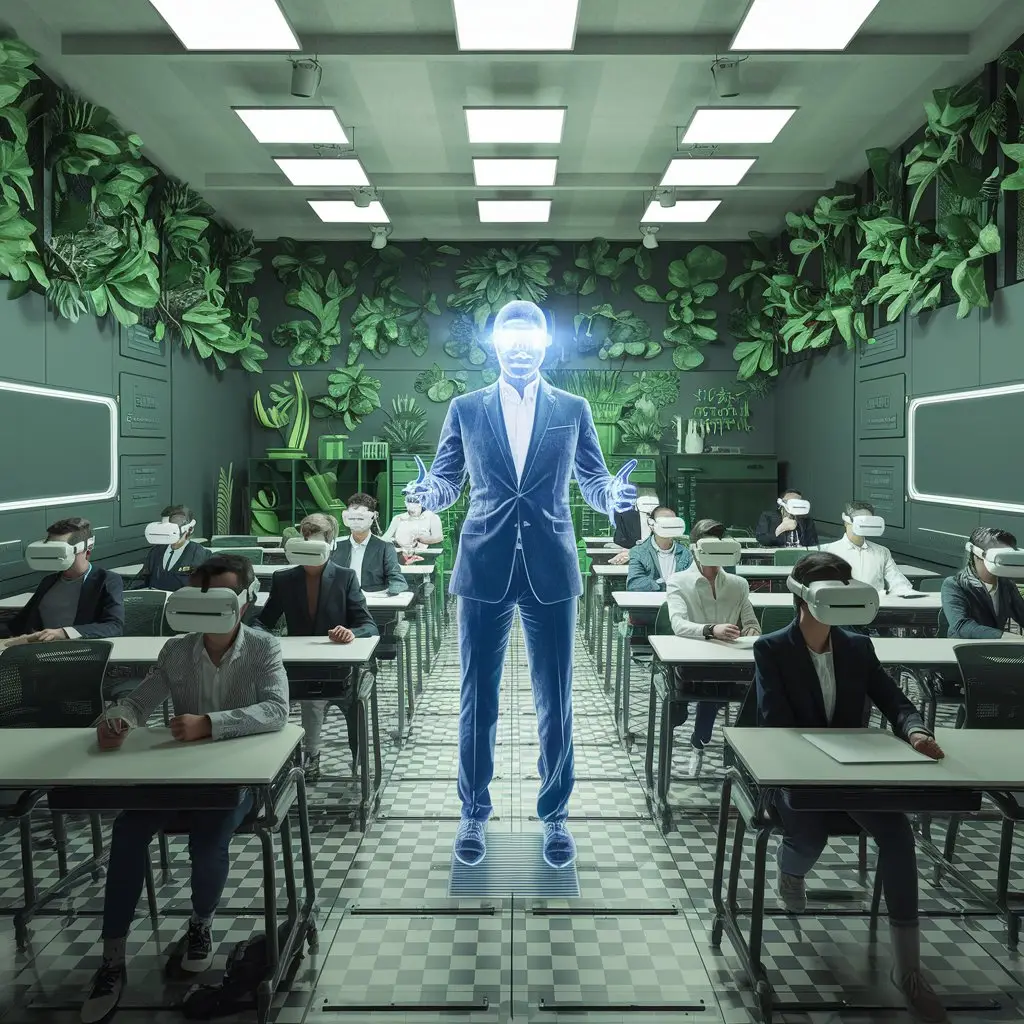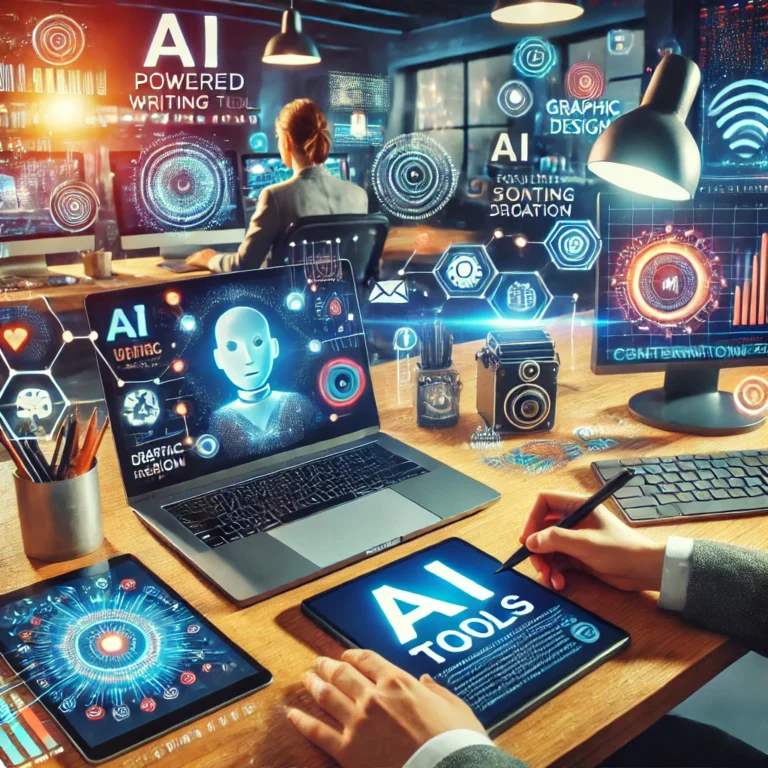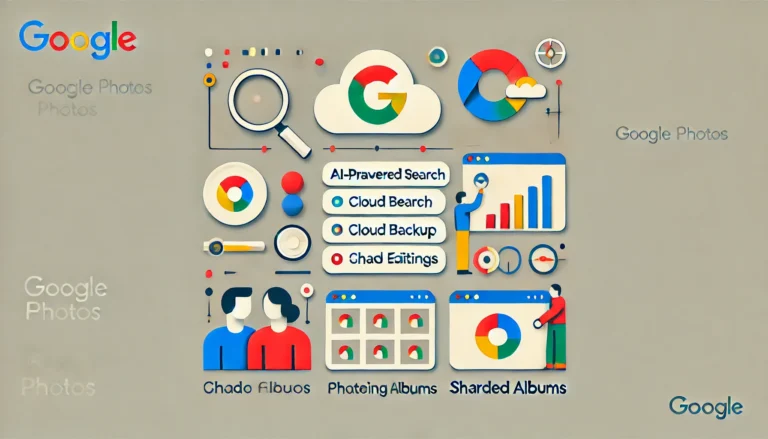
The classroom of the future is rapidly evolving due to technological advancements that are reshaping how students learn and interact with educational content. This transformation offers exciting opportunities for students, teachers, and administrators alike. Staying informed about emerging technology trends in education will help schools, educators, and policymakers adapt and prepare effectively. Here’s a look at the most promising trends driving the future of classroom technology and their potential impact on learning.
Trend 1: Artificial Intelligence (AI) Integration

AI is poised to revolutionize the classroom, enhancing personalized learning, automating administrative tasks, and providing real-time feedback.
- Intelligent Tutoring Systems: AI-powered adaptive learning platforms offer personalized content based on each student’s unique learning pace and strengths. These systems can help fill knowledge gaps by identifying where a student may struggle and providing targeted exercises to build understanding.
- Virtual Teaching Assistants: AI-driven chatbots and virtual assistants are lightening teachers’ workloads by managing administrative tasks like grading and organizing content. These assistants can even engage with students in real-time, answering questions and offering feedback, allowing teachers more time to focus on core teaching tasks.
- Predictive Analysis: By analyzing patterns in student performance and engagement, AI can predict which students may need additional support, helping educators provide timely interventions.
Trend 2: Virtual and Augmented Reality (VR/AR)

Immersive technologies will redefine interactive learning, making complex concepts more engaging and accessible.
- VR Field Trips: Imagine a history class visiting ancient Egypt or a biology class examining the Great Barrier Reef—all through VR headsets. VR enables students to experience distant locations, historical sites, and even complex scientific environments without leaving the classroom.
- AR Enhanced Textbooks: Augmented Reality offers interactive 3D models, which can make learning more engaging and accessible. For example, students could scan a QR code on a textbook page to see a 3D model of a molecule or historical artifact, enriching their understanding of complex concepts.
- Skill-Based Training: In fields like healthcare, engineering, and architecture, VR/AR simulations offer hands-on practice in a safe environment, which can prepare students for real-world applications.
Trend 3: Cloud-Based Learning Platforms
Cloud technology enables seamless collaboration, automatic updates, and scalable infrastructure.
- Cloud-Based LMS: Cloud-based Learning Management Systems (LMS) such as Google Classroom, Moodle, and Canvas support seamless integration with other tools, scalability, and flexibility. Teachers can share resources, students can submit assignments, and everyone can collaborate in a single, centralized environment.
- Collaborative Tools: Tools like Google Docs, Microsoft Teams, and Slack facilitate real-time collaboration, making it easy for students to work together on group projects or access feedback from teachers instantly.
- Enhanced Accessibility: Cloud platforms make education accessible to students regardless of their location, which is essential for remote and hybrid learning models.
Trend 4: Gamification and Simulation
Game-based learning and simulations foster engagement, creativity, and problem-solving skills.
- Educational Games: Curriculum-aligned games introduce concepts in an enjoyable format that enhances retention. Games targeting math, language arts, and science encourage critical thinking and collaboration while reinforcing course material.
- Simulation-Based Learning: Simulations create real-world scenarios where students can safely explore fields like business, medicine, or environmental science. For example, business students can participate in simulations of stock markets, while medical students practice virtual surgeries.
- Motivation and Engagement: Gamified experiences can boost motivation and reduce performance anxiety, allowing students to learn in an interactive and supportive environment.
Trend 5: Internet of Things (IoT) Integration
IoT enables smart classrooms, automating tasks, enhancing safety, and optimizing resource allocation.
- Smart Whiteboards: These interactive boards allow for real-time note-taking, collaboration, and sharing, turning the classroom into an interactive learning space. Teachers can save and distribute notes, so students have easy access to the day’s lesson.
- Automated Attendance Systems: Using IoT technologies such as RFID or beacon devices, schools can track attendance effortlessly, helping improve safety and providing real-time data for educators and administrators.
- Resource Optimization: IoT sensors can monitor lighting, heating, and ventilation, creating more comfortable and energy-efficient classrooms while minimizing costs and environmental impact.
Trend 6: Mobile Learning
Mobile devices facilitate anytime, anywhere learning, expanding access to education.
- Educational Apps: From language learning apps like Duolingo to math and science apps that reinforce curriculum topics, students have access to endless resources at their fingertips.
- Bring Your Own Device (BYOD): Schools encouraging BYOD programs enable students to bring their own devices, which can be used to access school resources and learning platforms. This model fosters self-directed learning and ensures students are comfortable with the tools they use.
- 24/7 Learning Access: Mobile learning enables continuous access to educational materials, making it possible for students to study at any time and in any place that suits them.
Trend 7: Data Analytics and Feedback
Data-driven insights inform instruction, improve student outcomes, and enhance teacher effectiveness.
- Learning Analytics: By analyzing student engagement, progress, and performance, teachers gain valuable insights into areas where students excel or struggle, allowing them to adapt lesson plans accordingly.
- Personalized Feedback: AI-driven tools can provide customized feedback in real-time, which helps students understand areas for improvement without delay. Detailed analytics also allow teachers to tailor their instruction to better meet each student’s needs.
- Predictive Insights: Data analytics can highlight trends, helping schools make informed decisions about curriculum design, resource allocation, and intervention strategies.
Trend 8: Cybersecurity and Digital Citizenship
As technology advances, prioritizing cybersecurity and digital literacy is crucial.
- Cybersecurity Education: As students use digital platforms more frequently, integrating cybersecurity into the curriculum is essential. Students learn best practices for safe online behavior, protecting both personal and institutional data.
- Digital Literacy: From understanding social media responsibility to discerning credible information sources, digital literacy is crucial for today’s students. By teaching digital citizenship, schools prepare students to navigate the internet responsibly and ethically.
- Privacy Protection: Schools must stay up-to-date on data protection laws, ensuring students’ data is secure while educating students on the importance of privacy.
Conclusion
The future of classroom technology holds immense potential to make learning more accessible, engaging, and personalized. However, implementing these innovations requires careful planning, investment, and collaboration among educators, administrators, and policymakers. By adopting these trends thoughtfully, we can create a more inclusive and impactful learning environment that equips students with the skills they need for success in an increasingly digital world.



